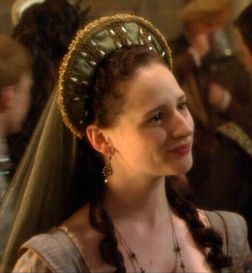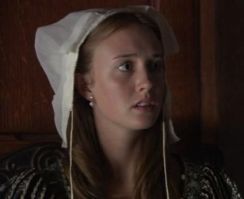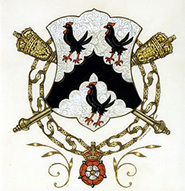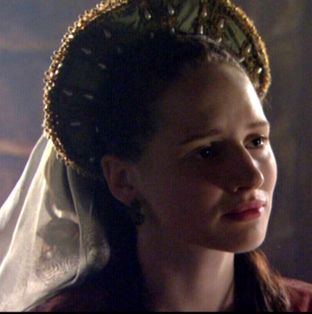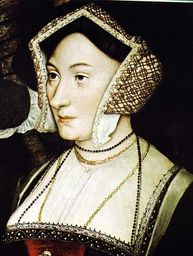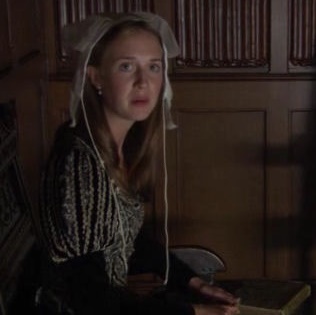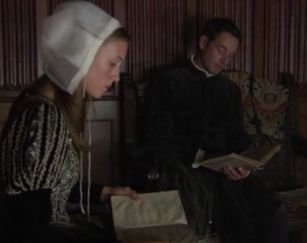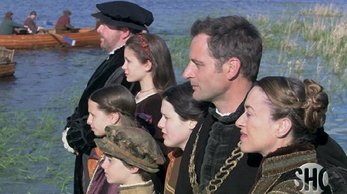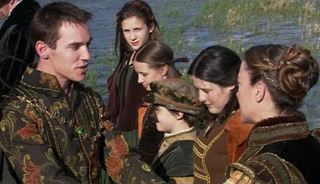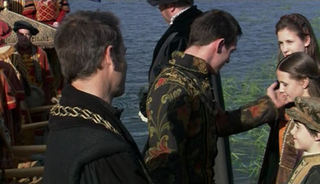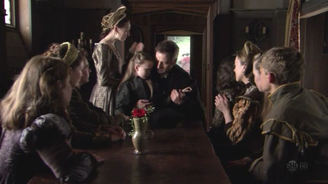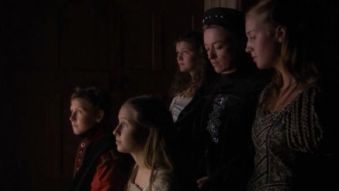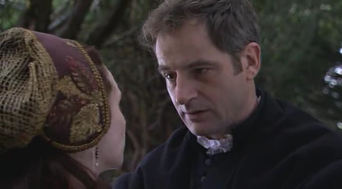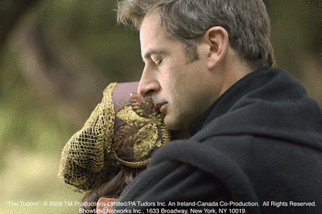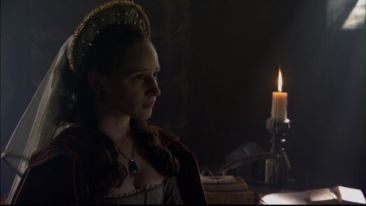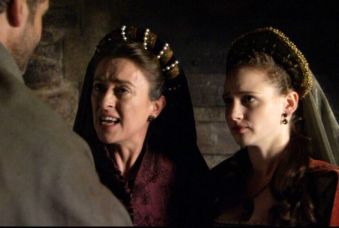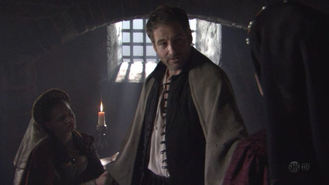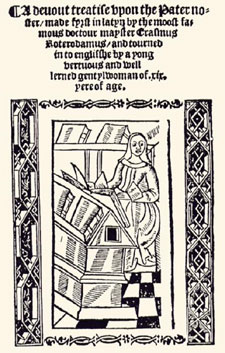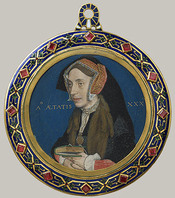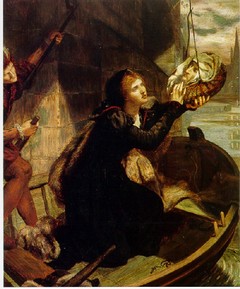Margaret More Roper
Jump to navigation
Jump to search
Margaret More Roper as played by Gemma Reeves (Season 2) and Kerry O'Sullivan (Season 1)
Humanist, Translator, Writer
UNFORGETTABLE CHARACTER QUOTES
DEFINING EPISODES | MEMORABLE SCENES
PHOTOS
For further details see: <a class="external" href="http://www.crcstudio.arts.ualberta.ca/wwr_magazine/online/spring_05/sp05_art1_roper.php" rel="nofollow" target="_blank" title="http://www.crcstudio.arts.ualberta.ca/wwr_magazine/online/spring_05/sp05_art1_roper.php">http://www.crcstudio.arts.ualberta.ca/wwr_magazine/online/spring_05/sp05_art1_roper.php</a>
Humanist, Translator, Writer
| | |
| Born 1505--Died December 25, 1544 Character's Backstory: Margaret Roper, née More, was a well-known and highly regarded translator and poet during her lifetime. She was fluent in Greek and Latin, and even studied medicine. She was one of the first translators of Erasmus of Rotterdam; she wrote her first well-known translation of some of his works when she was just 19. She is believed to have written, together with her husband William Roper, the very first biography of her father Thomas More -- The Life of Sir Thomas More. During More's imprisonment she was a frequent visitor to his cell, along with her husband. After More was beheaded in 1535 his head was displayed on a pike on London Bridge. Margaret, shocked by this act of desecration to her father's body, purchased his head. She had the head buried with her. Gentility: Daughter of Sir Thomas More Historical Significance: Creator (along with her husband) of the historical image of her father. If not for the preserved correspondence between her and Sir Thomas, as well as the biography she co-wrote about him, the historical reputation of More would probably be very different than what it is today. Personality Type: Serious and highly intellectual, exactly like her father. Very loyal to her family and her beliefs. Signature Look: Prim, respectable, and lady-like. Endearing Traits: Outstanding loyalty to her father; preservation of his memory, reputation, and historical image. Notable intellectual achievements, very rare for a woman in the 16th century. Annoying Trait(s): Personage Also Featured In: In Alfred Lord Tennyson's Dream of Fair Women, he invokes Margaret Roper ('Who clasped in her last trance/ Her murdered father's head') as a paragon of loyalty and familial love. In Robert Bolt's famous play A Man for All Seasons, Margaret and Roper were major characters. In the 1966 film, she was portrayed by Susannah York. Click EasyEdit to update this page! (Don't see the EasyEdit button above? <a href="/#signin" target="_self">Sign in</a> or <a href="/accountnew" target="_self">Sign up</a>.) | The More family coat of arms |
CHARACTER CONNECTIONSFather: Sir Thomas More Mother: Jane Colt (More's first wife) Siblings: Elizabeth; Cecily; John; Alice Middleton the Younger (stepsister); Margaret 'Mercy' Giggs (adopted sister) Husband: William Roper Along with their brother John, the daughters of the More family were all educated to a very high standard--almost unheard of for non-royal women in their day. Margaret ('Meg'), Elizabeth, Cecily, foster sister Margaret ('Mercy') Giggs, and stepsister Alice Middleton all learned Latin, Greek, logic, mathematics, philosophy, and astronomy. The two Margarets (Meg and Mercy) were even inclined to study medicine. Their father encouraged them to continue their studies in medicine and theology even after they were married. This thorough and ongoing education yielded impressive results. Though much of her literary work is no longer extant, Margaret Roper is known to have written Greek and Latin poetry, modeled on the style of the first-century Roman author Quintilian. She matched the quality of her father’s treatise on 'The Four Last Things' with her own discussion of death. Her writing on this topic took place in the context of a friendly competition--the outcome of which More declared something of a tie. As Margaret grew up, she joined the circle of Erasmus’ correspondents, who had nothing but praise for “More’s whole school." Her most prominent existing work is tangentially tied to the publication of De Institutione Feminae Christianae by the Spanish humanist writer Juan Vives. The English edition, 'A Very Frutefull and Pleasant Boke Called the Instruction of a Christen Woman,' was translated by one of the More family tutors, Richard Hyrde. The translation was possibly commissioned by Queen Katharine of Aragon herself. Richard Hyrde was the same writer who provided a defense of female education, in the introduction to Margaret’s translation of Erasmus’ Latin commentary on the Lord’s Prayer. Vives mentions the More girls’ first-rate education and its chastity-reinforcing results early in De Institutione. For further reading, <a class="external" href="http://etd.lsu.edu/docs/available/etd-11162007-100232/unrestricted/Binder2.pdf" rel="nofollow" target="_blank">see</a>) *See also SIR THOMAS MORE'S Historical profile here* for more on the More family |
UNFORGETTABLE CHARACTER QUOTES
| |
DEFINING EPISODES | MEMORABLE SCENES
| |
PHOTOS
| | Margaret Roper (née More) detail from a large-scale painting of Thomas More's entire family, by Hans Holbein. Holbein's original painting (c. 1527) is believed to have been destroyed in the Great Fire of London, which took place in 1666. |
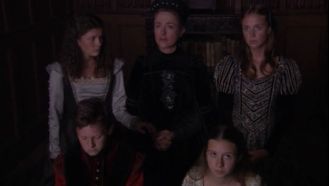 | |
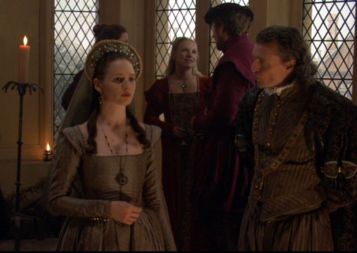 | 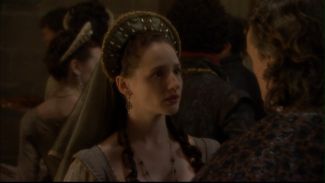 |
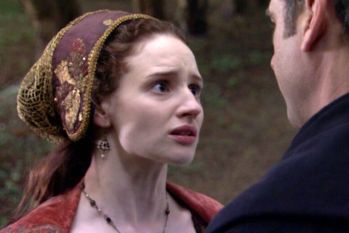 | 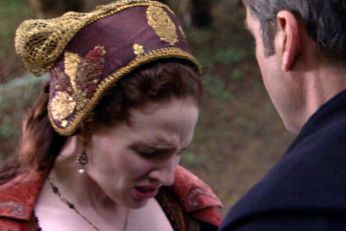 |
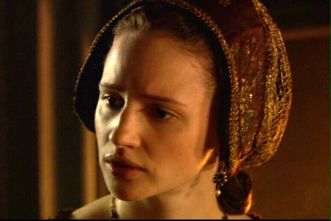 | |
| | |
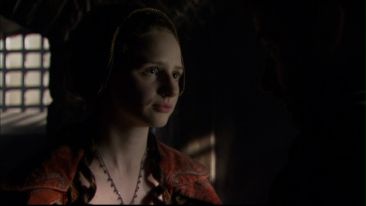 | 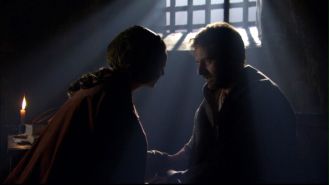 |
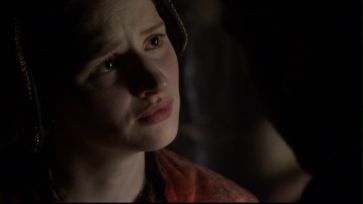 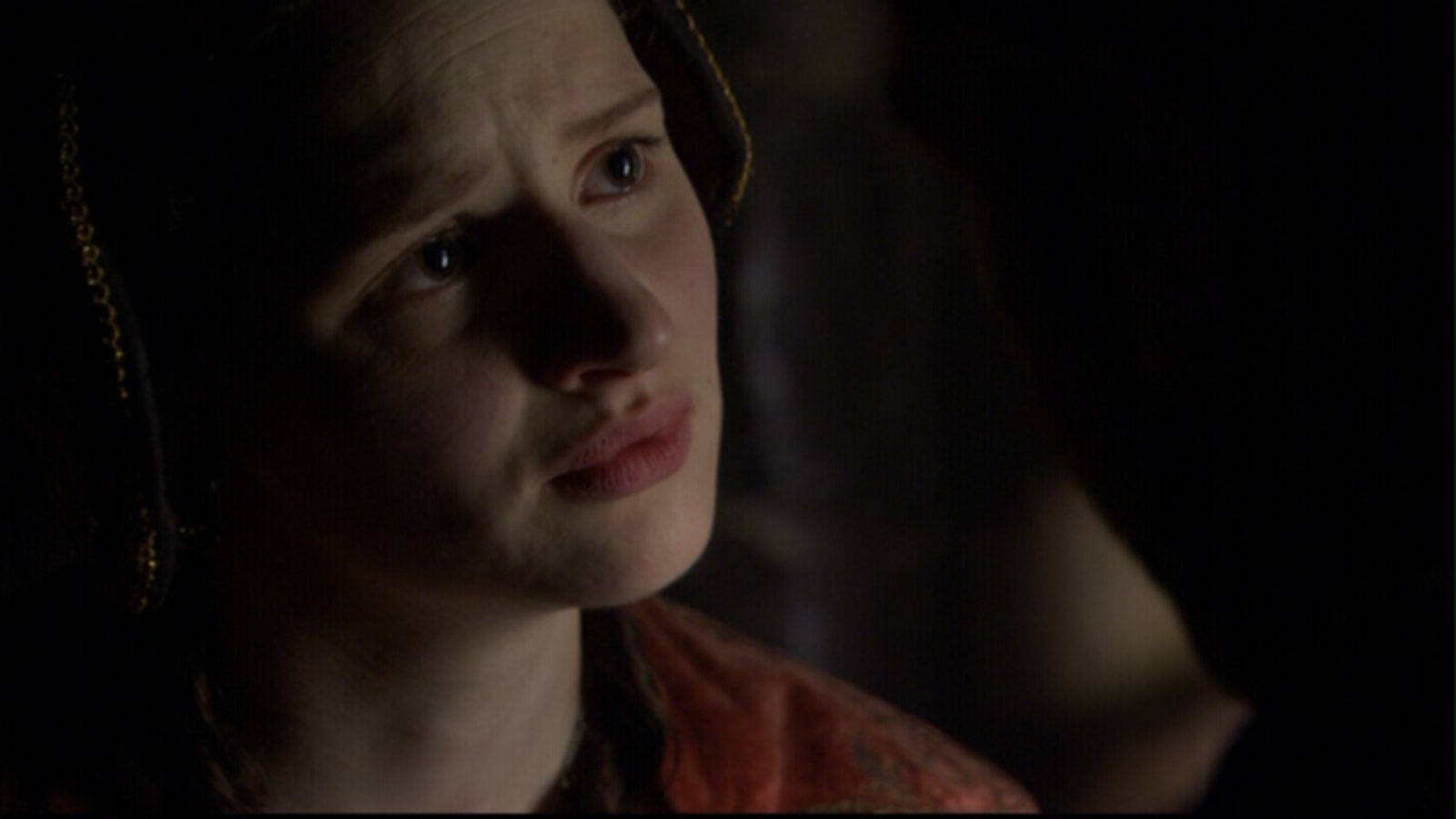 | 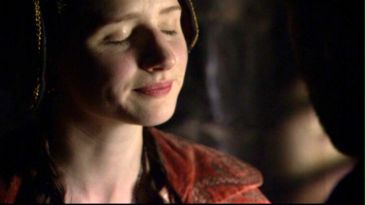  |
| Romantic painting depicting Margaret removing her father's head from Tower Bridge |
| TRIAL OF SIR THOMAS MORE: Letter to Margaret Roper (July 5, 1535) This letter, inscribed with a piece of coal at the Tower of London on the day before his execution, was Thomas More's last written work. ------------------------------------------------------------------------------------------------------------- Our Lord bless you good daughter and your good husband and your little boy and all yours and all my children and all my godchildren and all our friends. Recommend me when you may to my good daughter Cecily whom I beseech our Lord to comfort, and I send her my blessing and to all her children and pray her to pray for me. I send her an handkercher and God comfort my good son her husband. My good daughter Daunce hath the picture in parchment that you delivered me from r my Lady Conyers, her name is on the back side. Shew her that I heartily pray her that you may send it in my name to her again for a token from me to pray for me. I like special well Dorothy Colly, I pray you be good unto her. I would wit whether this be she that you wrote me of. If not, I pray you be good to the other as you may in her affliction, and to my good daughter Joan Aleyn to give her I pray you some kind answer, for she sued hither to me this day to pray you be good to her. I cumber you, good Margaret, much, but I would be sorry, if it should be any longer than tomorrow, for it is Saint Thomas' Even and the Vtas of Saint Peter and therefore tomorrow long I to go to God, it were a day very meet and convenient for me. I never liked your manner toward me better than when you kissed me last for I love when daughterly love and dear charity hath not leisure to look to worldly courtesy. Fare well my dear child and pray for me, and I shall for you and all your friends that we may merrily meet in heaven. I thank you for your great cost. I send now unto my good daughter Clement her algorism stone and I send her and my good son and all hers God's blessing and mine. I pray you at time convenient recommend me to my good son John More. I liked well his natural fashion. Our Lord bless him and his good wife my loving daughter, to whom I pray him be good, as he hath great cause, and that if the land of mine come to his hand, he break not my will concerning his sister Daunce. And our Lord bless Thomas and Austin and all that they shall have. From The Last Letters of Thomas More, edited by Alvaro De Silva (Erdmans Publishing, 2000), pp 127-128. |
